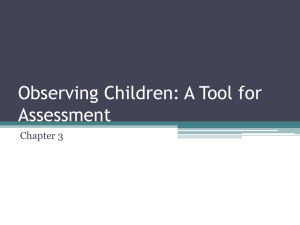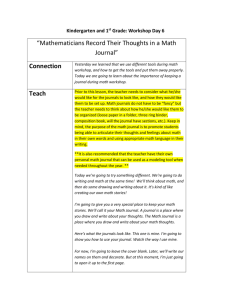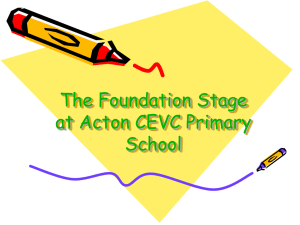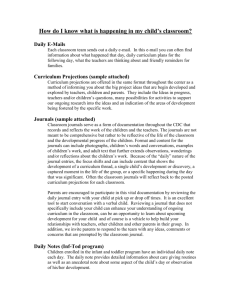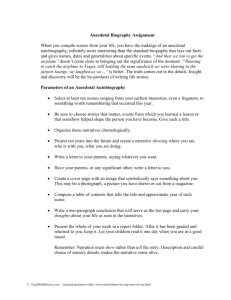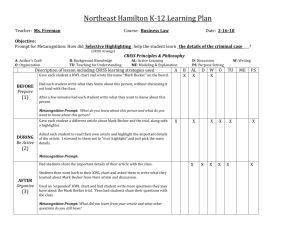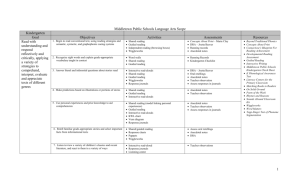Examples of lesson assessments
advertisement
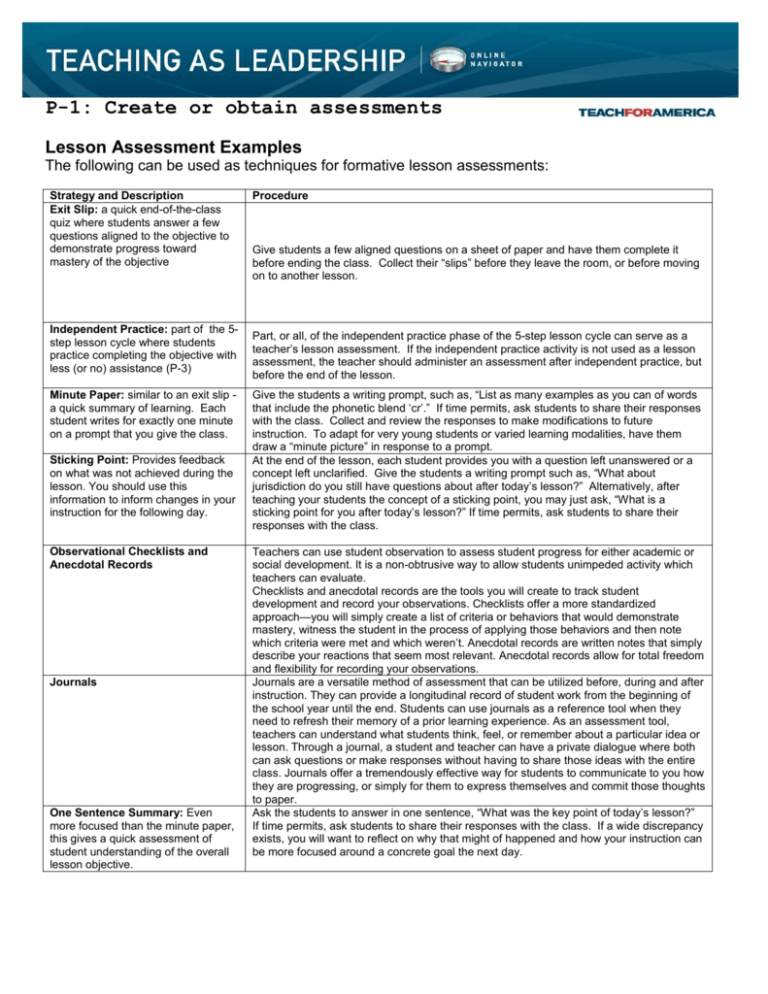
P-1: Create or obtain assessments Lesson Assessment Examples The following can be used as techniques for formative lesson assessments: Strategy and Description Exit Slip: a quick end-of-the-class quiz where students answer a few questions aligned to the objective to demonstrate progress toward mastery of the objective Independent Practice: part of the 5step lesson cycle where students practice completing the objective with less (or no) assistance (P-3) Minute Paper: similar to an exit slip a quick summary of learning. Each student writes for exactly one minute on a prompt that you give the class. Sticking Point: Provides feedback on what was not achieved during the lesson. You should use this information to inform changes in your instruction for the following day. Observational Checklists and Anecdotal Records Journals One Sentence Summary: Even more focused than the minute paper, this gives a quick assessment of student understanding of the overall lesson objective. Procedure Give students a few aligned questions on a sheet of paper and have them complete it before ending the class. Collect their “slips” before they leave the room, or before moving on to another lesson. Part, or all, of the independent practice phase of the 5-step lesson cycle can serve as a teacher’s lesson assessment. If the independent practice activity is not used as a lesson assessment, the teacher should administer an assessment after independent practice, but before the end of the lesson. Give the students a writing prompt, such as, “List as many examples as you can of words that include the phonetic blend ‘cr’.” If time permits, ask students to share their responses with the class. Collect and review the responses to make modifications to future instruction. To adapt for very young students or varied learning modalities, have them draw a “minute picture” in response to a prompt. At the end of the lesson, each student provides you with a question left unanswered or a concept left unclarified. Give the students a writing prompt such as, “What about jurisdiction do you still have questions about after today’s lesson?” Alternatively, after teaching your students the concept of a sticking point, you may just ask, “What is a sticking point for you after today’s lesson?” If time permits, ask students to share their responses with the class. Teachers can use student observation to assess student progress for either academic or social development. It is a non-obtrusive way to allow students unimpeded activity which teachers can evaluate. Checklists and anecdotal records are the tools you will create to track student development and record your observations. Checklists offer a more standardized approach—you will simply create a list of criteria or behaviors that would demonstrate mastery, witness the student in the process of applying those behaviors and then note which criteria were met and which weren’t. Anecdotal records are written notes that simply describe your reactions that seem most relevant. Anecdotal records allow for total freedom and flexibility for recording your observations. Journals are a versatile method of assessment that can be utilized before, during and after instruction. They can provide a longitudinal record of student work from the beginning of the school year until the end. Students can use journals as a reference tool when they need to refresh their memory of a prior learning experience. As an assessment tool, teachers can understand what students think, feel, or remember about a particular idea or lesson. Through a journal, a student and teacher can have a private dialogue where both can ask questions or make responses without having to share those ideas with the entire class. Journals offer a tremendously effective way for students to communicate to you how they are progressing, or simply for them to express themselves and commit those thoughts to paper. Ask the students to answer in one sentence, “What was the key point of today’s lesson?” If time permits, ask students to share their responses with the class. If a wide discrepancy exists, you will want to reflect on why that might of happened and how your instruction can be more focused around a concrete goal the next day. P-1: Create or obtain assessments KWL Chart: see the information on KWL charts elsewhere in the workbook. Leave the Carpet: Accommodates younger students who may not be able to write and can aid in a physical transition from one activity or lesson to another. Ask students to get out their KWL charts. Direct them to find something in their “Wondering” column that they can now answer in their “Learned” column. Direct them next to place the specific new knowledge they have gained in the “Learned” column. Alternatively, you could ask students what other questions have arisen for them about this topic of study over the course of the class period, and to place it at the bottom of their “Wondering” column. Tell students that they can leave the carpet and go back to their desks once they provide a word that begins with the letter of study (or answer a question about the book you read, an arithmetic problem, etc.). Provide think time for students and then ask each student to provide a word. Remind each student to leave the carpet and go back to his or her desk when they provide a word that starts with the appropriate letter. This activity can be adapted for use as students line up to go to recess, are dismissed at the end of the day, or are leaving for their next class.
